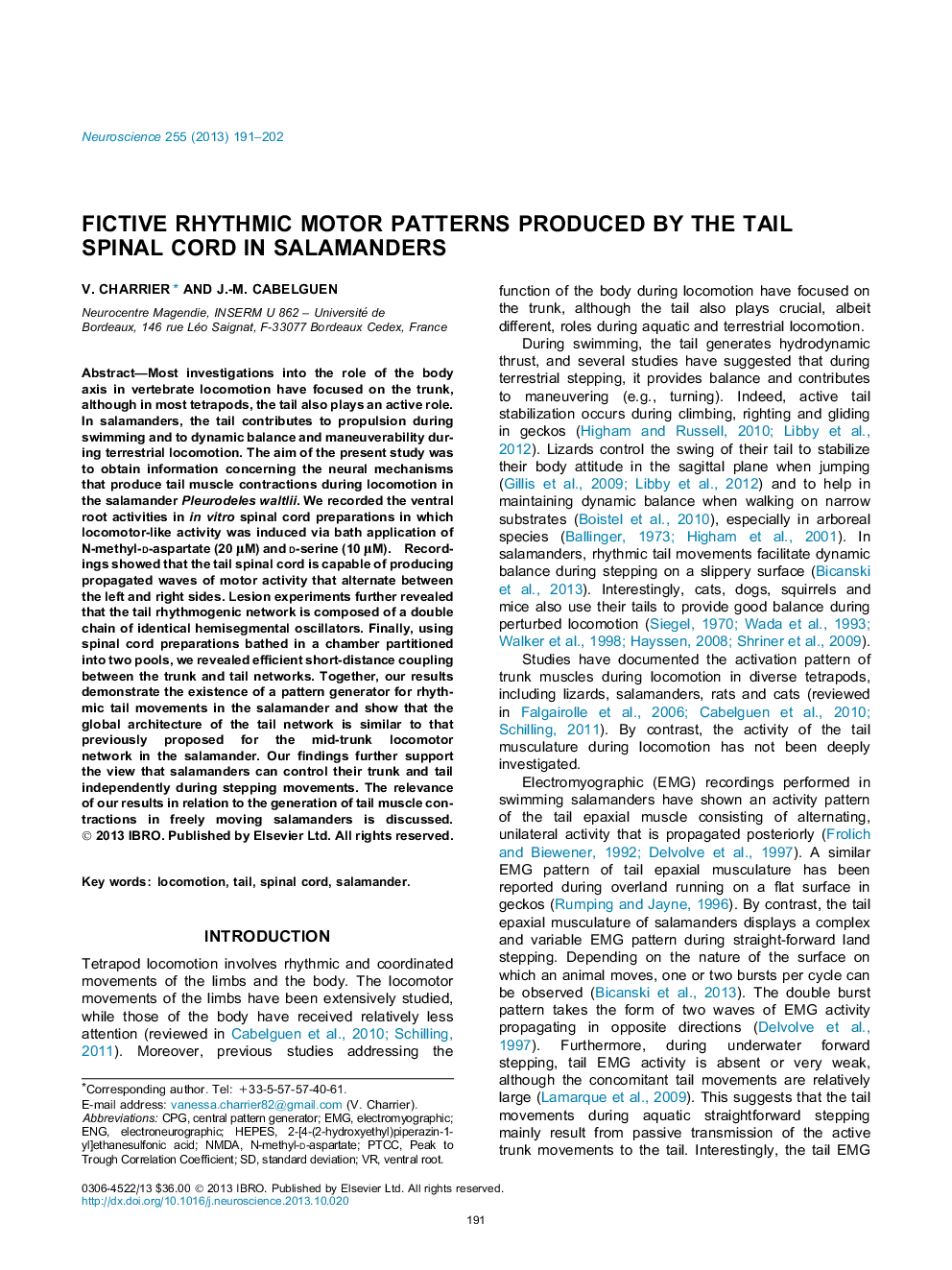| کد مقاله | کد نشریه | سال انتشار | مقاله انگلیسی | نسخه تمام متن |
|---|---|---|---|---|
| 6274267 | 1614821 | 2013 | 12 صفحه PDF | دانلود رایگان |

- We evidence a central pattern generator for locomotion in the tail's salamander.
- The tail central pattern generator is a double chain of hemisegmental oscillators.
- We evidence efficient short-distance coupling between the body and tail networks.
- Our data explain the flexibility of the axial motor system during locomotion.
Most investigations into the role of the body axis in vertebrate locomotion have focused on the trunk, although in most tetrapods, the tail also plays an active role. In salamanders, the tail contributes to propulsion during swimming and to dynamic balance and maneuverability during terrestrial locomotion. The aim of the present study was to obtain information concerning the neural mechanisms that produce tail muscle contractions during locomotion in the salamander Pleurodeles waltlii. We recorded the ventral root activities in in vitro spinal cord preparations in which locomotor-like activity was induced via bath application of N-methyl-d-aspartate (20 μM) and d-serine (10 μM).Recordings showed that the tail spinal cord is capable of producing propagated waves of motor activity that alternate between the left and right sides. Lesion experiments further revealed that the tail rhythmogenic network is composed of a double chain of identical hemisegmental oscillators. Finally, using spinal cord preparations bathed in a chamber partitioned into two pools, we revealed efficient short-distance coupling between the trunk and tail networks. Together, our results demonstrate the existence of a pattern generator for rhythmic tail movements in the salamander and show that the global architecture of the tail network is similar to that previously proposed for the mid-trunk locomotor network in the salamander. Our findings further support the view that salamanders can control their trunk and tail independently during stepping movements. The relevance of our results in relation to the generation of tail muscle contractions in freely moving salamanders is discussed.
Journal: Neuroscience - Volume 255, 26 December 2013, Pages 191-202